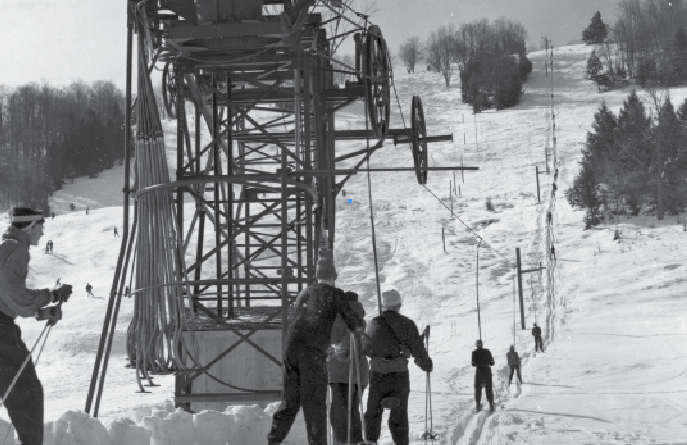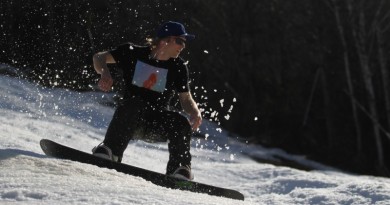Suicide Six: 80 Years of Amazing Firsts
America’s oldest lift-served ski area celebrates its 80th birthday with a string of firsts.
A couple of years ago the company that ran the Park City ski area was a little late with a payment on the leased land that made up the majority of its skiing terrain. When it went to make the payment, it found that Vail Resorts had negotiated a new lease with the landowners. A legal feud ensued (no pun intended), but Vail prevailed (pun intended) and now owns what was the Park City ski area.
It turns out that a similar plot line 80 years ago eventually led to the founding of Suicide Six, the nation’s first ski resort.
In late 1933, Wallace “Bunny” Bertram was living in Woodstock, Vermont at the White Cupboard Inn owned by Robert and Elizabeth Royce. Winter business at the inn was primarily members of the Amateur Ski Club of New York who came to ski the nearby hills. There were no lifts so all the skiing had to be “earned” by hiking or skinning up those hills. Bunny Bertram was a ski instructor who helped coach the less experienced skiers.
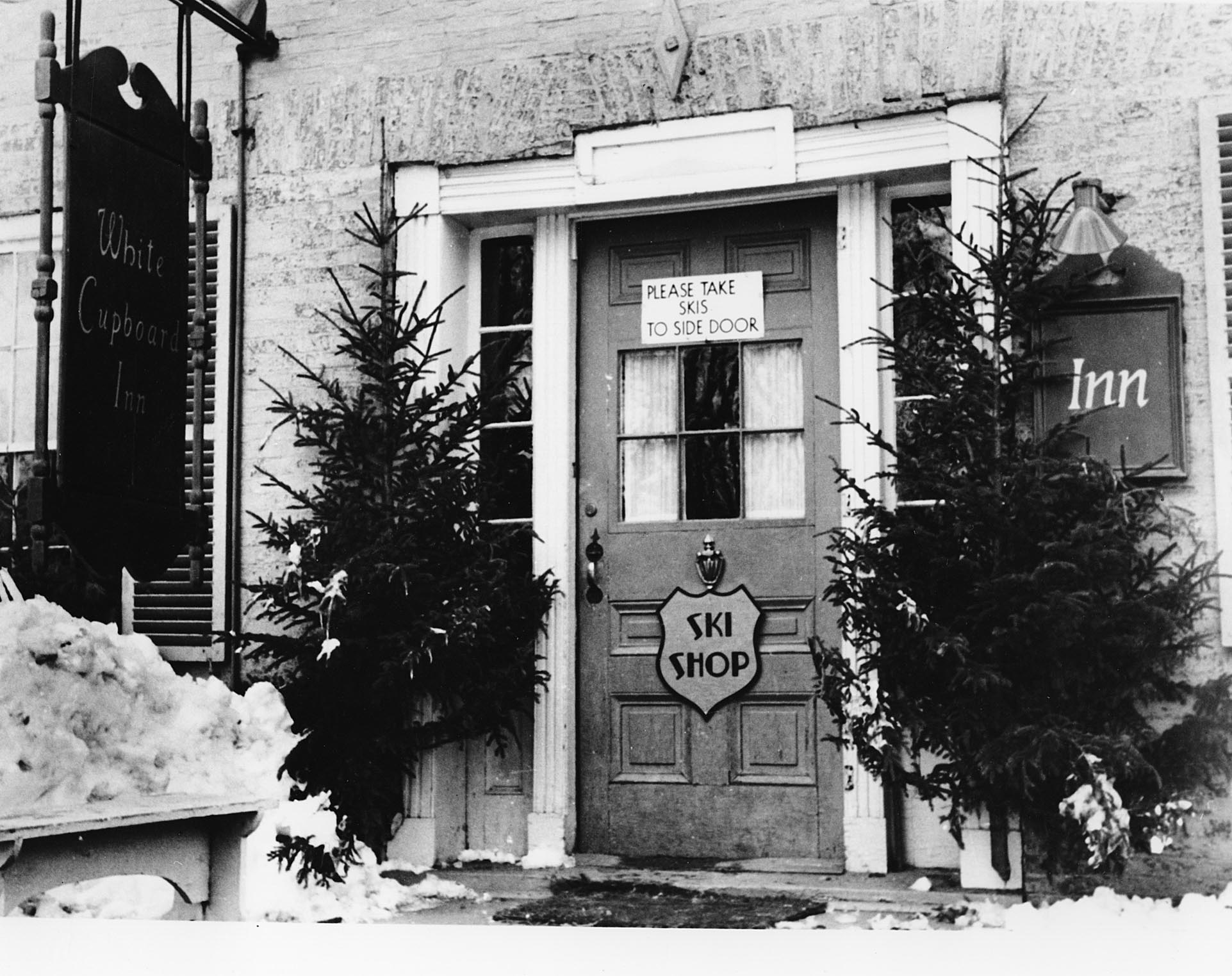
As winter started, the Royces, some of their New York guests, and Bunny Bertram began discussing the possibility of some kind of lift that could pull skiers up the hill allowing more runs per day. They had heard about a rope tow powered by a car engine that had been built in Quebec the previous winter. The Royces obtained plans for the rope tow from the Quebec group. The Royces also had a topological expert map out the hills around Woodstock that would be appropriate for such a lift. The expert identified six hills and numbered them on the map from one to six. The Royces chose hill number two for their first ski lift on grazing land owned by dairy farmer Clint Gilbert.
The Royces paid Gilbert $5 to lease the pasture for the season and retained local mechanic Dave Dodd to put together the first ski lift in the United States. Bunny Bertram was heavily involved in building that first lift, a 900-foot long rope tow powered by a Model T engine. The White Cupboard Skiway opened on January 18, 1934, charging $1 a day for use of the tow or fifty cents for a half day.
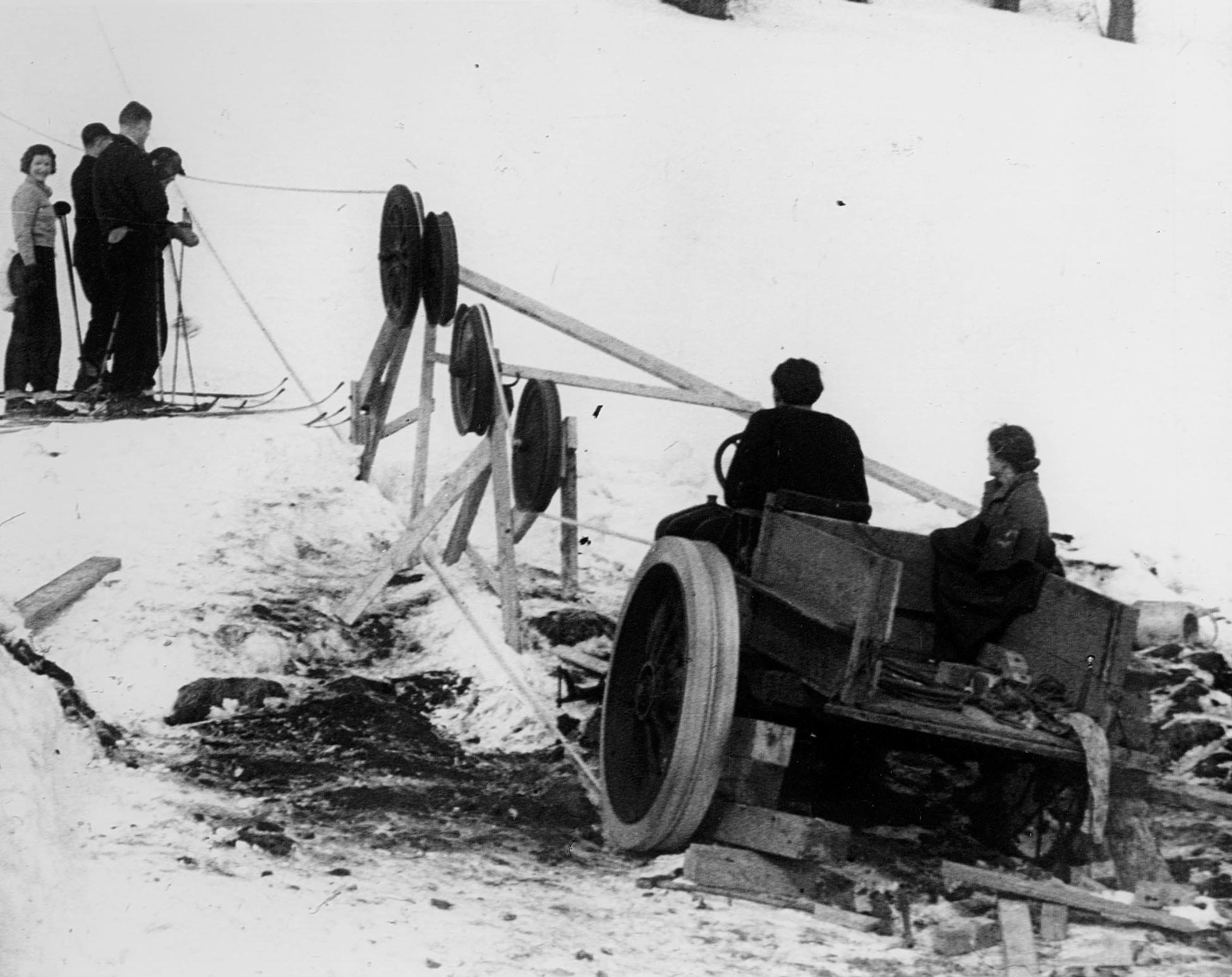
After a successful first season the Royces were prepared to offer Gilbert $100 for the 1934-35 lease on his pasture. The story goes that they had wanted to present Gilbert with a crisp, new $100 bill, but by the time they obtained one, Bunny Bertram had already closed a lease-deal with Gilbert for $10 plus a percentage of the ski tow’s income. Bunny Bertram was in the ski business.
Bertram changed the name of the area to the Woodstock Ski Hill. He also made some changes to the original rope tow. The Model T was replaced with a more reliable electric motor provided by the Woodstock Electric Company—all Bertram had to do was pay for the electricity it used. To make the rope easier to ride, he also improved the pulley mechanism based on a Ferris wheel he had observed.
How Suicide Six Got its Name
By the end of the 1934-35 season, the relationship between Bertram and Clint Gilbert had become strained. Worried that he wasn’t getting an accurate percentage of the ski business, Gilbert had attached Bertram’s bank account. Bertram decided to sever his relation with Gilbert and went looking for a new hill.
This led him to hill #6 on the topo map, only a short distance from Gilbert’s hill. His first target was the south facing side known as the Gully, but how to get access to the land? Enter the Fisk family and primarily Elizabeth “Muddy” Fisk whose husband, Harvey, was an influential New York banker. The Fisks bought the Gully land, paid to have the power line extended into the location, and let Bunny Bertram use the land rent-free. [For an hilarious reencactment of Bunny Bertram’s decision to put in a rope tow see The Drunk History of Skiing. ]
Bunny’s Ski Tows opened for the 1935-36 season. By the way, the Fisk’s daughters became accomplished ski racers—probably with Bunny’s coaching. They formed the nucleus of the United States Women’s Ski Team for the 1936 Olympics.
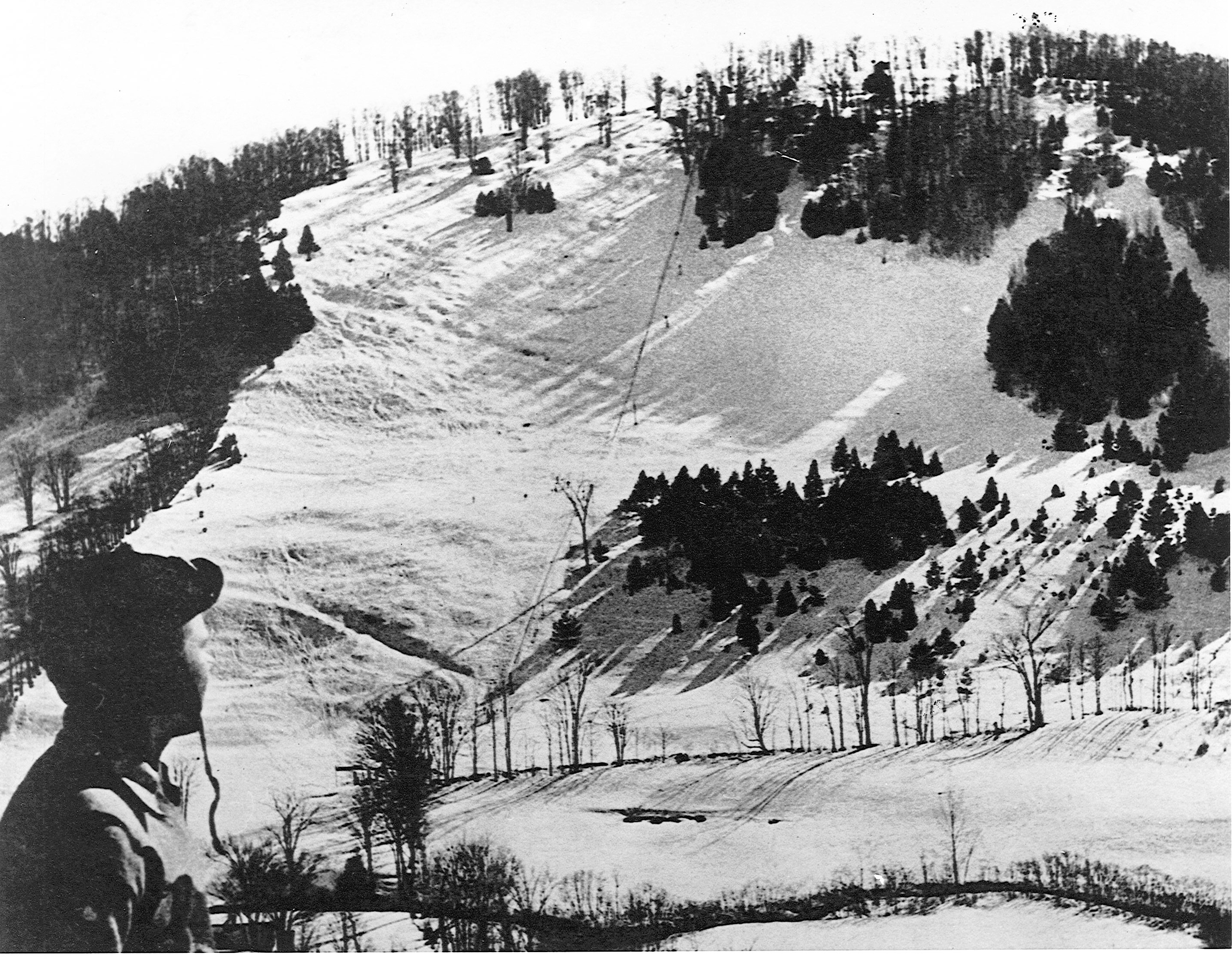
Even though the Gully is now part of Suicide Six, it was a year before Bertram could purchase the rest of hill #6, the top of the hill and the land on the northeast side – the steep side. Legend has it that when looking at the steep northeast face of hill #6, Bertram said “it would be suicide to ski straight down that face.” Later, in thinking up a name for his new expanded area, he recalled his comment and from his high school English class, the power of alliteration: hence Suicide Six.
Suicide Six opened on Christmas day, 1937. Bunny Bertram was the lift operator, ticket seller, maintenance man, marketing manager, slope groomer, and occasionally a ski instructor and ran Suicide Six for 25 years.
The Rise of Racing
Under his leadership, Suicide Six played a key role in the development of competitive skiing in the United States. The slope that had inspired the area’s name was called “The Face” and its steepness challenged even top racers. The Dartmouth ski team, which Bertram coached, trained at Suicide Six. The Fisk Trophy Race started in 1937 and is the longest running alpine ski race in the United States. The 79th running will be at Suicide Six on February 7, 2016, and will draw top eastern racers.
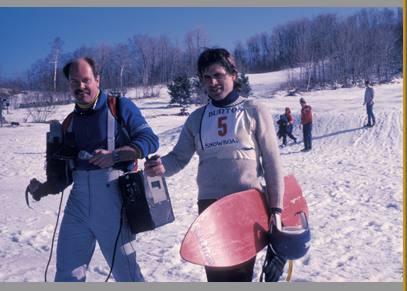
Bertram also had regular races that anyone could enter and pioneered a NASTAR-like system where competitors would receive gold, silver, or bronze pins depending on their time versus the hill record. The 1936 Olympian Alex Bright had set the original record of 57.6 seconds. The record was eventually lowered to 27 seconds by Tom Corcoran, who would finish fourth in the 1960 Olympic Slalom in Squaw Valley and go on to found the Waterville Valley ski area.
Bertram and Suicide Six are also credited with starting the first youth racing program in the United States in 1956. The area today still has a strong youth racing program run by the Woodstock Ski Runners, one of the oldest ski clubs in the United States.
Bertram’s competitive spirit went beyond racing. After reading an article in a magazine about someone in Europe setting a record for vertical feet in a day, Bertram contacted a local young skier about trying to break that record. Wendell “Wendy” Cram, now in his 90s, still recalls that day. “We just shattered the European record by quite a bit. I did 130-something trips, and the vertical feet were 750 per trip.” That’s over 100,000 feet of vertical! He did go through four pairs of tow mitts.
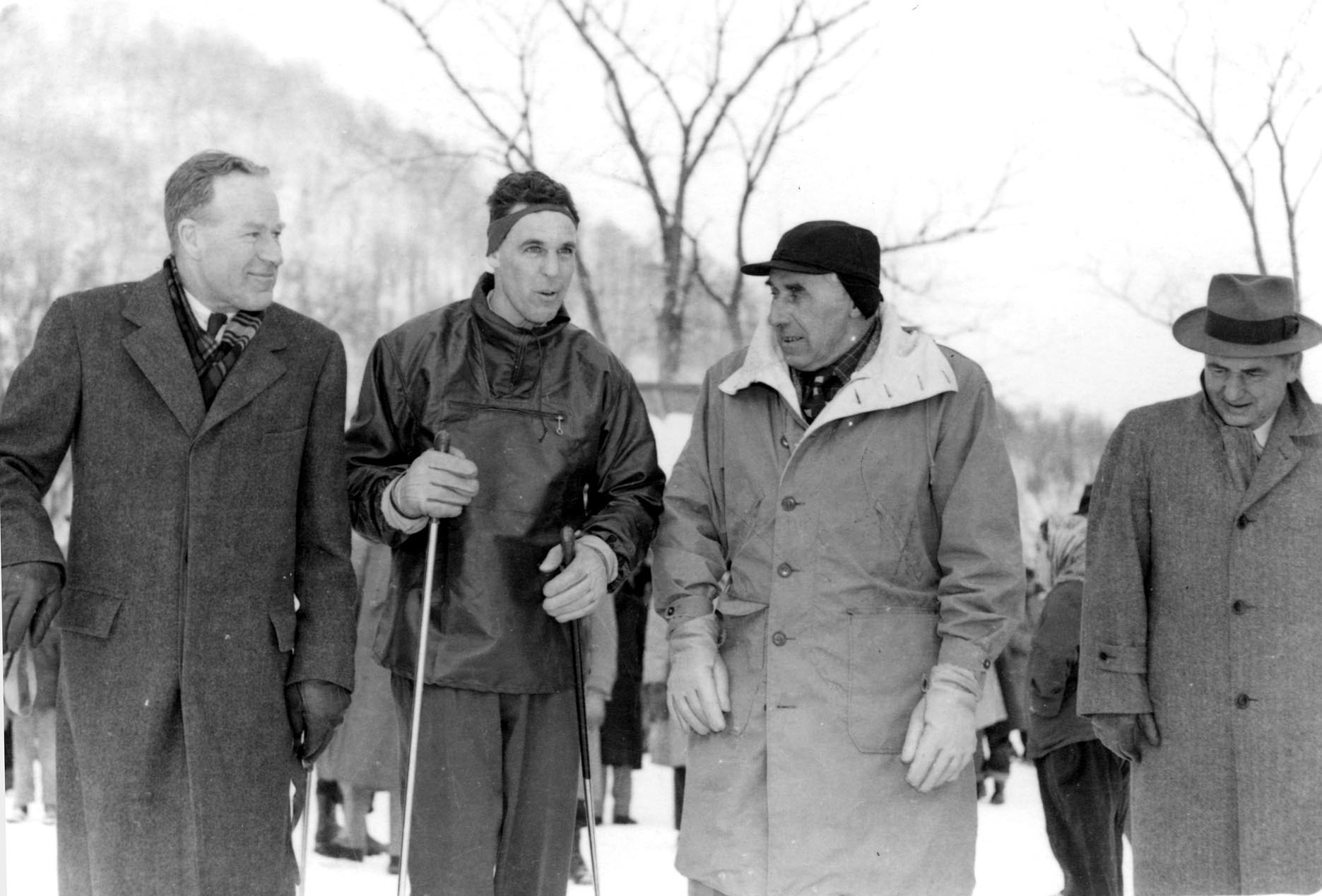
In 1961 Bertram sold Suicide Six to Laurance Rockefeller who already owned the nearby Mt. Tom ski area. Rockefeller saw Suicide Six as a tougher complement to the more laidback Mt. Tom. Eventually Rockefeller would purchase and rebuild the historic Woodstock Inn and make the ski areas part of the Inn’s offerings.
Rockefeller would make many enhancements to Suicide Six. Chairlifts replaced most of the old surface lifts; a new base lodge was constructed; snowmaking was added. One of the changes that drew some ire from the locals was to re-grade the upper portion of “The Face” to make it “easier.” A local reportedly quipped that it was like “painting a mustache on the Mona Lisa!”
And even with the changing face of winter sports, Suicide Six continued to make history. The first National Snowboarding Championships were held at Suicide Six in 1982. Suicide Six local Paul Graves, a champion Snurfer rider, organized the event which received national TV coverage on both the Today show and Good Morning America. In addition to Graves, some of the competitors were Jake Burton Carpenter and Tom Sims.
Suicide Six celebrated its 80th birthday this year. If you visit the area today—and you should—you will get more than just an enjoyable day of skiing or riding. You will get a trip back in time to the beginning of lift-served skiing in the United States.

